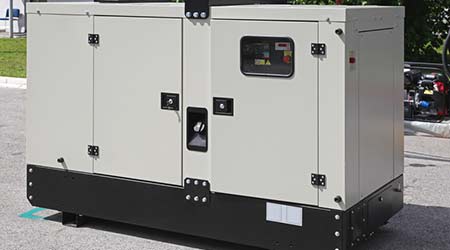Functional Load Testing Important Process for Testing UPS
Second of a 4-part article on UPS, ATS and Generators
The functional load testing process involves actually testing the UPS system at all functional points the system is designed for.
This testing includes a steady-state load test. Technicians check all input and output conditions at 0, 50, and 100 percent load and test these parameters: input voltage, output voltage, input current, output current, output frequency, input current balance, and output voltage regulation. This analysis can reveal if input currents match across all phases of a module, and it can help technicians determine if all modules equally share the load.
Power is equal to voltage times current. Because of this, a degraded voltage from one module or phase means other modules or phases must produce more current to accommodate the voltage drop.
Functional load testing also includes a harmonic analysis. Technicians monitor the input and output of the UPS for harmonic content during the steady-state load test. Observing the harmonic content at 0, 50, and 100 percent load enables technicians to determine the effectiveness of the input and output filters. Most manufacturers design UPS filtering systems for the greatest efficiency at full load. Consequently, the harmonic distortion is greatest when the system is least loaded and will smooth out as load increases. As long as the distortion is consistent across phases and modules, there is no reason for alarm.
The testing also should check filter integrity. UPS systems have three basic filter elements: input, rectifier, and output. The filters commonly use an arrangement of resistors, inductors and capacitors to remove unwanted waveform components. Thermal scans typically pick up indications of an inductor failure. Capacitors are more prone to failure under stress. Depending on the capacitor, they are subject to rapid expansion and leakage of acidic electrolyte when overstressed or drying out over time. A marked difference in phase currents drawn through a filter assembly can indicate that one or more capacitors have degraded.
A transient load test also is part of functional load testing. This test simulates the performance of a UPS with large, instantaneous swings in load. The UPS should accommodate full-load swings without a distortion in output voltage or frequency. Technicians should periodically test the response to load swings and compare them with the original specifications. By performing this test, they can extend the performance life of the UPS.
A module fault test for multi-module systems verifies that the system continues to maintain the critical load in the event of a module failure. By applying full system-rated load via load banks, a single module should be simulated to fail. The system should continue to maintain the load without significant deviation of voltage or frequency as verified by a recording oscillograph. Technicians should test each module similarly. Failing multiple modules will cause the system transfer to bypass.
Functional load testing also should include a battery-rundown test. A battery system might be subject to failures that go undetected. The most meaningful test of a battery is to observe temperature, voltage, and current under load conditions. Dissimilar voltages from cell-to-cell or set-to-set are a clear indication of battery degradation.
The battery rundown test will depend on the type of batteries connected to the UPS. Wet-cell batteries are tougher and can go a year between full battery-rundown tests. A full battery rundown test can easily overstress valve-regulated batteries, so technicians should test these more often. While conducting the discharge test, technicians should continue to check battery cell voltages, either manually or with a cell monitor. When the battery set is no longer able to provide the designed discharge time — this should be the design time — or approximately 80 percent of the rated capacity, it is time to consider a full battery replacement.
Related Topics:















